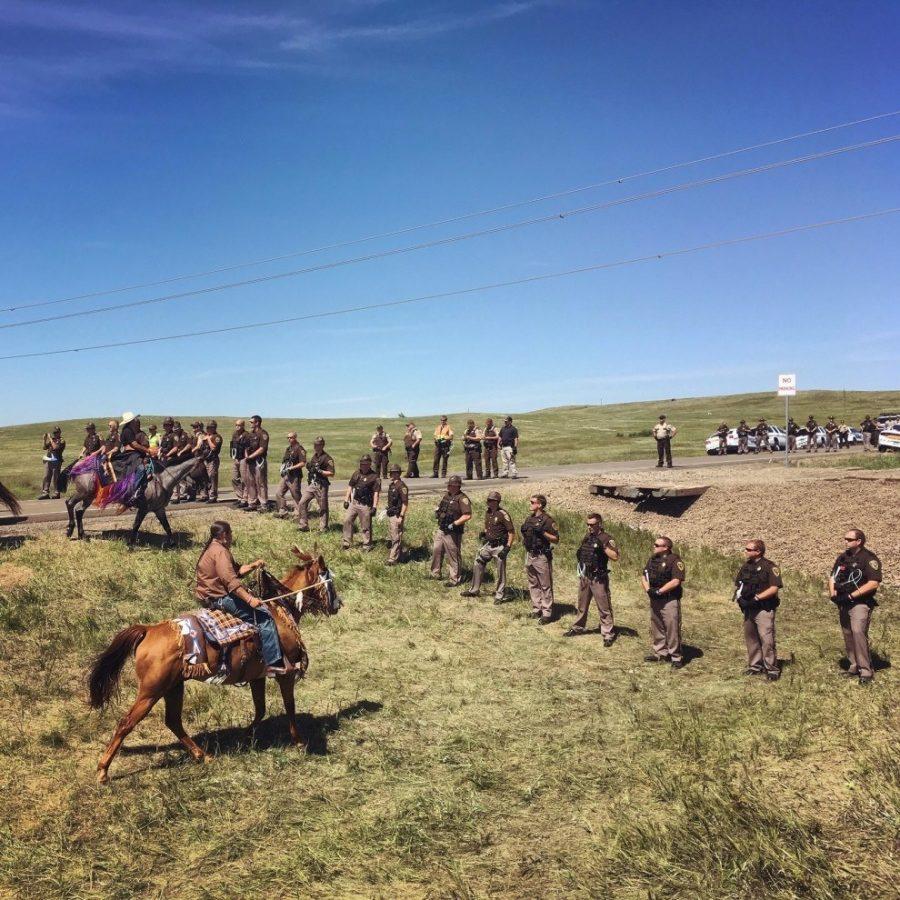Standing Rock won’t Stand Down
On July 25th, the US Army Corps of Engineers approved the construction of a 30-inch underground pipeline stretching 1,172 miles. It is projected to “carry 470,000 barrels of crude oil per day” according to Buzzfeed journalist Jim Dalrymple II. He states this in an article,“What you need to know about the Dakota Oil Pipeline and the Native Americans trying to stop it.”
There are a few appealing benefits to this major oil pipeline. The U.S. Geological Survey “estimates there are 7.4 billion barrels of ‘undiscovered, technically recoverable oil’ at the pipeline’s starting point in North Dakota,” and the Texas-based company who spearheaded the pipeline, Energy Transfer Partners, said “the $3.7 billion project will create up to 12,000 construction jobs.” However, some think that the losses outweigh out the benefits. In particular, the Standing Rock Sioux Tribe has protested and filed a lawsuit for the construction to stop.
The Tribe argued that “the pipeline crosses areas of great historical and cultural significance to the Tribe” and “also crosses waters of utmost cultural, spiritual, ecological, and economic significance to the Tribe and its members,” Dalrymple wrote. In addition, the Tribe worries that an oil spill could ruin their drinking water. Yet, the construction process still has progressed and it has been six months without any major changes to halt such actions one way or the other. That is, until August and September, when the issue became more well-known through the media.
“In mid-August, protesters succeeded in shutting down construction at one site after a tense standoff with state police. Many people were arrested,” Dalrymple wrote. Then, in September, a week earlier, awareness and change started to really take affect. Unfortunately, it had to get worse before it got better.“On Sept. 3, protesters–many from the Lakota and Dakota tribes–clashed with private security guards,” Dalrymple wrote. Tribal Spokesman Steve Sitting Bear said, “Six people were bitten by dogs, while 30 others were pepper-sprayed.” Three days later, the state government finally gave the Tribe some consideration.
“On Sept. 6, a judge ordered a temporary stop to construction on one part of the pipeline’s proposed route, but allowed it to continue on another,” Dalrymple wrote. Of course, this process is like so many other civil rights issues: we make two steps forward and one step back. “On Sept. 9, the federal judge hearing the lawsuit denied the tribe’s request to halt construction, saying that the Army Corps of Engineers complied with the law and ‘the Tribe has not shown it will suffer injury that would be prevented by any’ construction stoppage,” wrote Dalrymple.
Then, again another step forward was made on the same day by the Justice Department, the Department of the Interior, and the Department of the Army declared the following.“They would not allow construction within 20 miles east or west of a lake near the reservation land” and even said that there’s a “need for a serious discussion on whether there should be nationwide reform with respect to considering tribes’ views on these types of infrastructure projects,” Dalrymple wrote. Another ally of the Standing Rock Sioux Tribe is The Center for Biological Diversity. In response to all that is going on they called the pipeline “dangerous, unnecessary, and monumentally disrespectful.”

